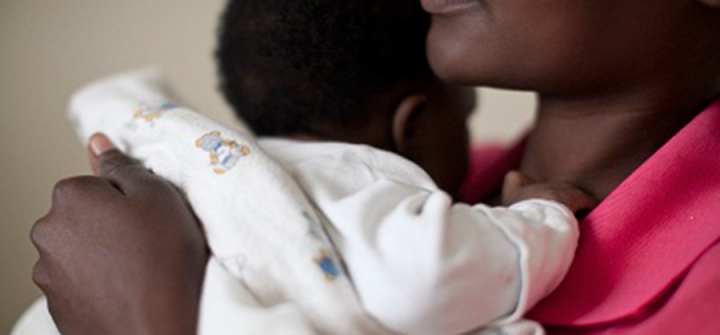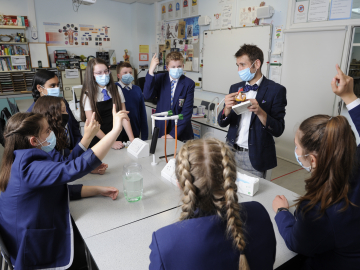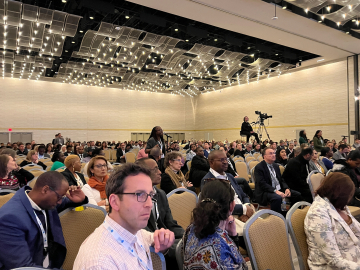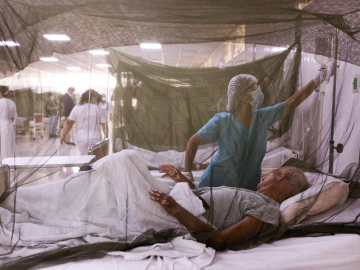Ending AIDS in Children: Q&A With Chip Lyons
Of the 36.7 million people worldwide living with HIV, 1.8 million are children. While the US and other developing nations have virtually eliminated transmission of the disease from mother to child, middle- and low-income countries around the world have a long way to go to prevent children from getting HIV. We talked to Charles Lyons, president and CEO of the Elizabeth Glaser Pediatric AIDS Foundation, about his organization’s efforts toward the global goal of eliminating AIDS in children by 2020.
How successful have prevention of mother-to-child transmission efforts been in reducing the number of children with HIV? What needs to be done to drive that number to zero?
In 2000, nearly 1,350 children were being newly infected with HIV each day. Remarkably, today that number is down to 400.
One factor driving progress was the Global Plan, which between 2011 and 2015 targeted 21 countries in sub-Saharan Africa that have been most affected by HIV. Since the plan began, new HIV infections in children have been reduced by 60%, resulting in 1.2 million children with HIV-positive mothers being born HIV-free. Together, the 21 Global Plan priority countries have reduced mother-to-child transmission rates from 22.4% in 2009 to a remarkable 8.9% in 2015—and 7 have reduced new HIV infections among children by more than 70%.
Yet 400 new pediatric infections a day are still too many. The next 5 years are crucial and provide an opportunity to prioritize the needs of children, adolescents, and young women, who are key to ending the epidemic. Without treatment, half the children born with HIV die before their 2nd birthdays. When the Global Plan ended, UNAIDS, PEPFAR and other partners set a goal to end AIDS in children by 2020 under a new call to action: Start Free, Stay Free, AIDS Free. This effort sets key targets to eliminate new infections among children, find and ensure access to treatment for all children living with HIV, and prevent new HIV infections among adolescents and young women.
How is EGPAF using data to reach women and their children and partners with HIV prevention, care and treatment services?
Accurate data analytics is a critical component of realizing our mission to end AIDS in children. We work to ensure that precise data contributes to making the best evidence-based decisions at the right time, particularly in targeting areas and communities where programs can achieve the greatest impact.
For example, our program in Malawi is looking at data such as positivity rates among those tested for HIV at various clinical service delivery points. This data is used to strategically station “linkage nurses” in health facilities. The nurses escort patients who have tested HIV-positive to care and treatment wards and get them enrolled into the program to initiate antiretroviral therapy.
In Cote d’Ivoire, our program officers collect and use clinical data to assess each site’s performance each month. Based on how health facilities are performing in key indicators, sites are targeted for technical assistance visits. For example, if TB screening among HIV-positive patients is particularly low for a site, our staff may give healthcare workers there one-on-one coaching on how and when patients ought to be screened for TB. We analyze subsequent data to see if the training had an impact.
Recent preliminary data from select countries we work in has shown that men, particularly young men, are not accessing resources at the same level as women. As always, we will adjust our approaches accordingly and develop strategies to improve services and level of impact.
Have you seen progress in closing the treatment and prevention gap among the key population of adolescents? What needs to happen next on that front?
Today, more HIV positive children are living into adolescence than ever before. Yet at the same time, adolescent AIDS-related deaths have tripled since 2000, and AIDS is now the leading cause of death for young people in Africa. The majority of these adolescents were infected with HIV through mother-to-child transmission.
EGPAF supports the creation of adolescent-specific services, adolescent-friendly clinic days and adolescent corners at health facilities to increase access to services for this population. We also support the development of community-level adolescent health awareness and testing campaigns led by adolescent peer ambassadors.
Globally, EGPAF reaches approximately 450,000 pregnant adolescent girls each year with HIV testing and counseling to prevent mother-to-child HIV transmission. We also provide care and treatment services to nearly 50,000 adolescents living with HIV.
Ultimately, adolescents need programs that they can grow with, shaped by their own voices and experiences, and that prepare them to transition successfully into treatment as adults.
A mother in Rwanda holds her child while listening to a nutrition nurse. Image by Laura Elizabeth Pohl




